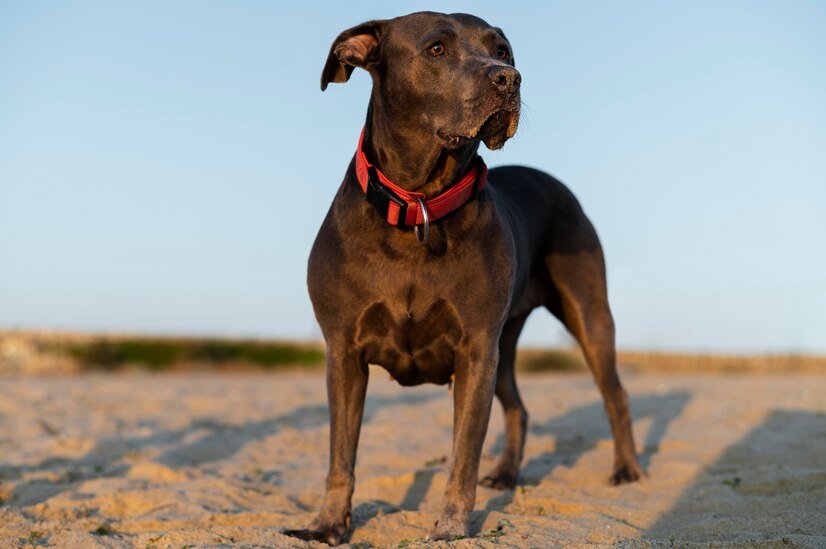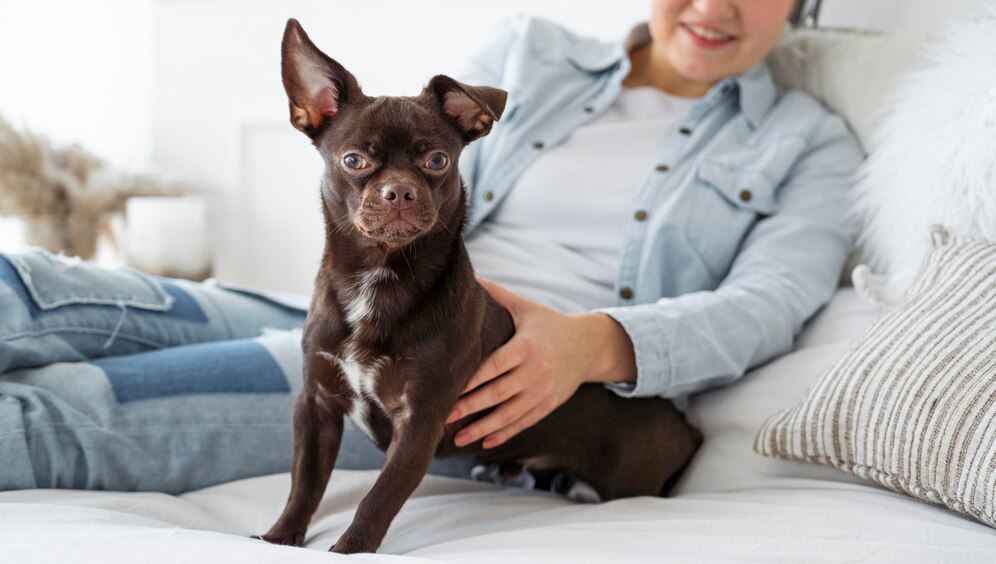The Mini Great Dane is an intriguing concept for dog lovers who adore the majestic and towering presence of the standard Great Dane but wish for a smaller, more manageable size. While there is no officially recognized “Mini Great Dane” breed, the term often refers to either a Great Dane mix or a selectively bred, smaller version of the standard Great Dane. In this comprehensive guide, we will dive into the world of Mini Great Danes, covering their appearance, temperament, care needs, and more.
What Is a Mini Great Dane?
A Mini Great Dane is typically a smaller version of the traditional Great Dane, achieved through selective breeding or by crossbreeding with smaller dogs. While these dogs may inherit many of the Great Dane’s characteristics, they are often more compact in size, making them more suitable for people who want the breed’s traits without the large size.
It’s important to note that there is no official breed standard for a Mini Great Dane, and these dogs are not recognized by major kennel clubs such as the AKC (American Kennel Club).

Appearance: A Smaller Version of the Gentle Giant
While a Mini Great Dane is smaller than the standard Great Dane, it still retains the breed’s classic features such as a muscular build, long legs, a deep chest, and the noble, regal appearance that makes Great Danes so iconic.
Size:
- Mini Great Danes can vary in size depending on their lineage.
- Height: Typically, they range from 24 to 30 inches at the shoulder.
- Weight: A Mini Great Dane usually weighs between 70 to 110 pounds, much smaller than the standard Great Dane, which can weigh up to 200 pounds.
Coat and Colors:
- Like their larger counterparts, Mini Great Danes have a short, sleek coat that is easy to maintain.
- Common colors include fawn, brindle, black, blue, and harlequin (white with black patches).
Temperament: The Same Gentle Nature in a Smaller Package
One of the most appealing traits of the Great Dane is its gentle and loving temperament, and the Mini Great Dane is no exception. Despite their smaller size, these dogs often retain the affectionate and easygoing nature of the larger Great Dane.
Personality:
- Friendly and Loyal: Mini Great Danes are known for their loyalty and strong bond with their family. They are affectionate and tend to be “lap dogs,” even though they are still quite large.
- Gentle Giants: Despite their size, they are gentle and patient, making them excellent family dogs. They are known to be good with children and other pets.
- Calm but Playful: Mini Great Danes are calm indoors but enjoy a good play session. Their energy levels are moderate, meaning they require regular exercise but are also happy to lounge around the house.
Training and Socialization:
- Mini Great Danes are intelligent and eager to please, making them relatively easy to train. Consistent, positive reinforcement methods work best with this breed.
- Early socialization is important to ensure they are well-behaved around strangers and other animals.
Health Concerns: Mini Size, Same Health Issues
Although Mini Great Danes are smaller than the standard breed, they can still inherit many of the health issues common to large breeds. Owners should be aware of potential health problems and take preventive measures.
Common Health Problems:
- Hip Dysplasia: Like many large breeds, Mini Great Danes can be prone to hip dysplasia, a condition where the hip joint doesn’t fit together properly, leading to arthritis.
- Bloat (Gastric Dilatation-Volvulus): Great Danes, including smaller versions, are at risk of bloat, a serious condition where the stomach fills with gas and twists. This is a medical emergency that requires immediate attention.
- Heart Conditions: Dilated cardiomyopathy is another condition that can affect both standard and Mini Great Danes.
- Joint Problems: Due to their size, Mini Great Danes may also experience joint issues as they age, including arthritis and elbow dysplasia.
Lifespan:
- Mini Great Danes tend to have a lifespan of 8 to 12 years, which is relatively typical for a larger dog breed but slightly longer than the lifespan of the standard Great Dane.
In such cases, one should opt for dog insurance to make your pet feel insured with any future health concerns. Insurance plans typically cover a range of expenses, including hospitalization, surgeries, and sometimes even routine care like vaccinations. Given the rising costs of veterinary care, the financial protection offered by insurance can outweigh the annual premium. Moreover, some insurance plans also offer coverage for third-party liabilities, which can protect pet owners from legal expenses in case their dog causes harm to someone else or damages property.
Secure Your Dog’s Future Today
As a responsible pet owner, it’s crucial to consider the long-term health and well-being of your dog. Don’t wait until it’s too late to realize the importance of dog insurance. With the pet care industry booming and veterinary costs on the rise, now is the time to invest in comprehensive insurance coverage for your furry friend.
Take the first step today by researching the available dog insurance plans in India. Compare the coverage options, read the fine print, and choose a plan that best suits your needs and budget. Your dog is more than just a pet; they are a cherished member of your family. Protect their future by securing their health with a reliable insurance policy.
Remember, by investing in dog insurance now, you are not only protecting your finances but also ensuring that your beloved pet receives the best possible care when they need it most. Don’t let unforeseen circumstances put your dog’s health at risk. Act now and give your dog the security they deserve. Visit Bima Company now to learn more about how we can help you protect your pet’s health.

Exercise and Activity Needs: A Moderate Approach
Mini Great Danes, like their larger relatives, are not as hyperactive as some smaller breeds, but they still require regular exercise to stay healthy and happy.
Exercise Requirements:
- Daily Walks: A Mini Great Dane needs at least one or two daily walks to keep their energy levels in check.
- Playtime: Engage them in moderate play sessions, including games like fetch or tug-of-war. Make sure to avoid excessive jumping or running, especially when they are young, to protect their growing joints.
Indoor Living:
- Due to their calm nature, Mini Great Danes adapt well to indoor living. They can live comfortably in apartments as long as they get their daily exercise. However, they do best in homes with enough space to move around freely.
Grooming and Maintenance: Low-Maintenance Care
One of the benefits of having a Mini Great Dane is their low-maintenance grooming needs. With a short, smooth coat, these dogs are easy to care for in terms of grooming.
Coat Care:
- Brushing: A weekly brushing will help remove loose hair and keep their coat healthy and shiny. Shedding is moderate, so occasional brushing is usually sufficient.
- Bathing: Mini Great Danes don’t need frequent baths unless they get particularly dirty. Every 6-8 weeks is usually enough to keep them clean.
Dental and Nail Care:
- Regular tooth brushing is important to prevent dental disease.
- Keep their nails trimmed to prevent overgrowth, which can be uncomfortable for them.
Is a Mini Great Dane Right for You?
While the Mini Great Dane is not an officially recognized breed, it has gained popularity among dog lovers who admire the Great Dane’s personality but need a smaller dog. If you’re considering adopting a Mini Great Dane, you should be prepared for a loving, loyal companion who still requires plenty of space and attention.
Who Is the Mini Great Dane Best For?
- Families with children: Their gentle nature makes them great with kids.
- Active individuals or families: While they are not overly energetic, they do enjoy regular activity.
- Experienced dog owners: Due to their size and potential health issues, a Mini Great Dane may be better suited for owners who have experience with large breeds.

